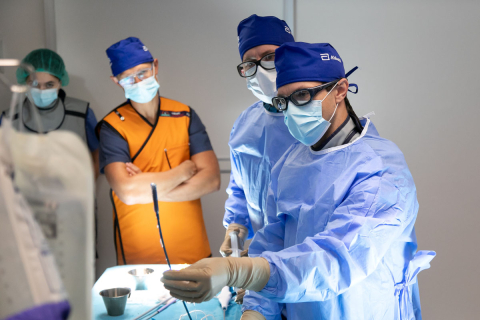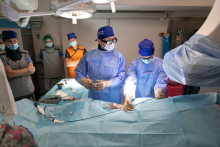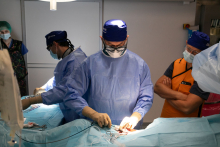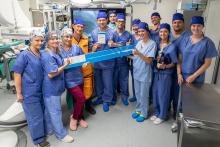Traditional pacemakers have electrodes. Modern ones are electrodeless. Implanting an electrodeless pacemaker reduces the patient's risk of infection associated with the presence of an electrode. The procedure itself is also minimally invasive. It is carried out "through a keyhole," that is, from a small puncture through the femoral vein. The entire system is only 4 cm long and resembles a small battery - a thin "finger" battery.
The novel Abbott pacemaker that has just been implanted is a new-generation electrodeless pacemaker. It differs from its predecessor in that it has a screwing mechanism in the heart muscle instead of a hook. This makes it presumably easier to remove and replace it with a new one.
Prof. Marcin Grabowski: "This modern method is reserved for special patients for now. They can be divided into two groups. One is the very young people, who have a chance for a very long survival. Such patients in the case of classic pacemakers would have the risk of many infections and many replacements of the device during their lifetime. The second group of patients are those who have an increased risk of infection, are facing some major surgery and/or immunosuppressive treatment. The indication for the modern method is also the occurrence of complications (infections, rupture of electrodes) after the use of a traditional pacemaker.”
The procedure using a new generation pacemaker was performed on a 61-year-old patient. He had indications for a pacemaker due to a so-called heart block. However, implanting him with a conventional pacemaker would have entailed risks, as the patient is awaiting a liver transplant. Transplants are a serious, aggravating procedure, which still has to be followed by immunosuppressive treatment, and this is conducive to infections. With the electrodeless pacemaker, the patient has been cardiac-protected before the transplant, and will have a lower risk of heart-related complications afterwards.
The new pacing system also features the ability to map the heart's electrical signals before implantation and a lifespan comparable to conventional pacemakers. In the future, the device can be upgraded to an atrioventricular electrodeless cardiac pacing system.
The procedure was carried out by a team of surgeons: Dr. Marcin Michalak and Dr. Łukasz Januszkiewicz, together with nursing staff: Dorota Swiatek, MA, Oleksandra Solohub, MA, and electroradiologist Katarzyna Zawiła at the 1st Chair and Department of Cardiology MUW, headed by Prof. Marcin Grabowski.
A day earlier, on 20.09.2023, a similar procedure was performed by Prof. Przemysław Mitkowski at the Cardiac Electrotherapy Laboratory of the University Clinical Hospital in Poznań. It is worth noting that in Poland the first operation was carried out just 11 days after the first such procedures in Europe.



